Some well waters are unsuitable for aquaculture, others must be treated
A portion of the rain that falls on the Earth’s surface and snow melt infiltrate downward through the soil and underlying geologic formations to eventually reach impermeable rock and accumulate in the geological matrix above the impermeable layer. Such saturated layers of geological material are called aquifers, and their tops are known as water tables. Aquifers hold water and also convey it in response to gravity to areas of lower elevation.
Porosity, permeability
The amount of water held by 1 cubic meter of an aquifer depends upon the volume of pore space within the geological matrix. For example, 1 cubic meter of coarse sand might hold 0.27 cubic meters of water, while an equal volume of fine clay might contain 0.4 cubic meters of water. In this example, the porosities of the sand and clay-based aquifers would be 27 and 40 percent, respectively. Aquifers consisting of fine particles hold more water than those with coarser particles.
The ability of an aquifer to transmit water is based on its permeability. Because resistance to flow is greater in fine particles than coarser ones, water moves more freely in gravel or sand than silt or clay.
Permeability is measured by hydraulic conductivity. The hydraulic conductivities of clay, silt and coarse sand are 0.0000001, 0.0001, and 0.5 centimeters per second, respectively. The movement of water in response to decreasing head (water level) in coarse sand could be 5,000 times faster than in silt and 5 million times faster than in clay.
Major aquifer types
Aquifers are classified as water table or unconfined aquifers, and confined aquifers. In water table aquifers, water rises to the elevation of the water table in a hole bored into the saturated layer. A confined aquifer is trapped between two impervious geological layers. If a hole is drilled through the upper confining stratum into the saturated layer, water will rise above the confining stratum and sometimes flow freely onto the land surface. A well that exhibits free flow is called an artesian well.
The two major types of aquifers are illustrated in Fig. 1. The recharge area or water source for a water table aquifer is any place on the land surface above its water table. However, only the area between the outcrops of the two confining strata serves to recharge confined aquifers.
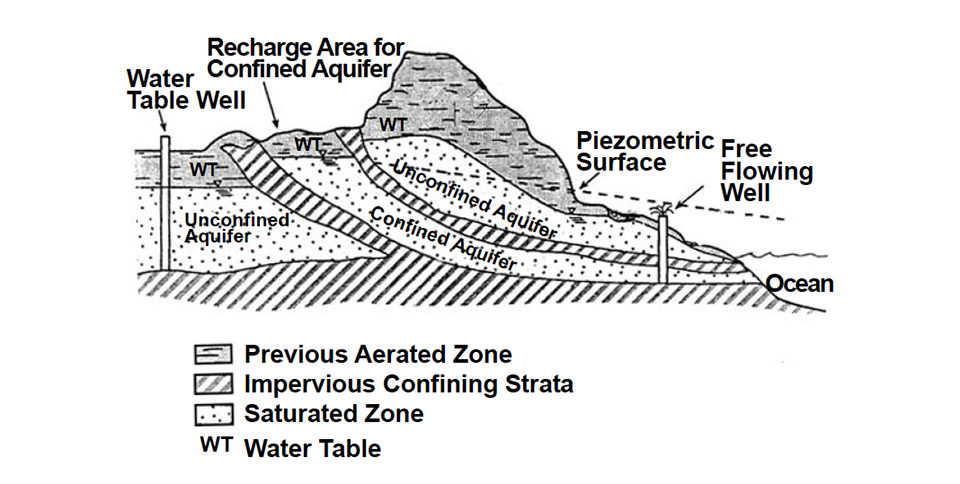
Aquifer variability
Aquifers vary greatly in both surface area and saturated thickness. They can be hundreds of kilometers in length and width, or have an area of only a few hundred square meters. The saturated thickness can range from less than 1 meter to over 100 meters. The depth of the water table can be less than 1 m or more than 1,000 meters below the land surface. It is not unusual to find more than one aquifer beneath the land in a given area.
Aquifers discharge water naturally where streams cut below the water table. This phenomenon, called base flow, sustains streams during dry weather. In some places, aquifers intercept the land surface and spring flow issues. Aquifers also can discharge onto sea beds. In coastal areas, sea water can penetrate geological formations and introduce saline water to aquifers beneath the land.
Wells
A well is made by digging or drilling a hole into the ground and extending it below the water table to the bottom of the aquifer. The water that seeps into the hole from the surrounding saturated zone can be removed manually by a rope and bucket, but usually is removed by a pump installed in the bottom of the hole. Wells seldom are over 300 meters deep.
The bore hole for a well is cased with pipe. A well screen made of plastic or wire wound around vertical steel rods and attached to the bottom of the casing allows water to enter but keeps particles in the aquifer out. Well head protection is also important, for surface water entering the top of the casing can contaminate ground water.
Pumping operations
In wells in water table aquifers, pumps evacuate water from inside the wells, and the decrease in head allows more water to seep by gravity through the well screens. The more easily the water flows into the well screens, the better the well yield.
Thus, the permeability of an aquifer usually is more important than its porosity in determining well yield. Moreover, although increasing well diameter increases well yield, high yields cannot be obtained from aquifers of low permeability.
Before the pump is started, the water level in a well in a water table aquifer stands at the level of the water table. Pump operation causes the water level to fall in the well, and the water table declines, forming a downward-sloping cone around the well. The decline in water level as water approaches the well is called the draw-down curve (Fig. 2).
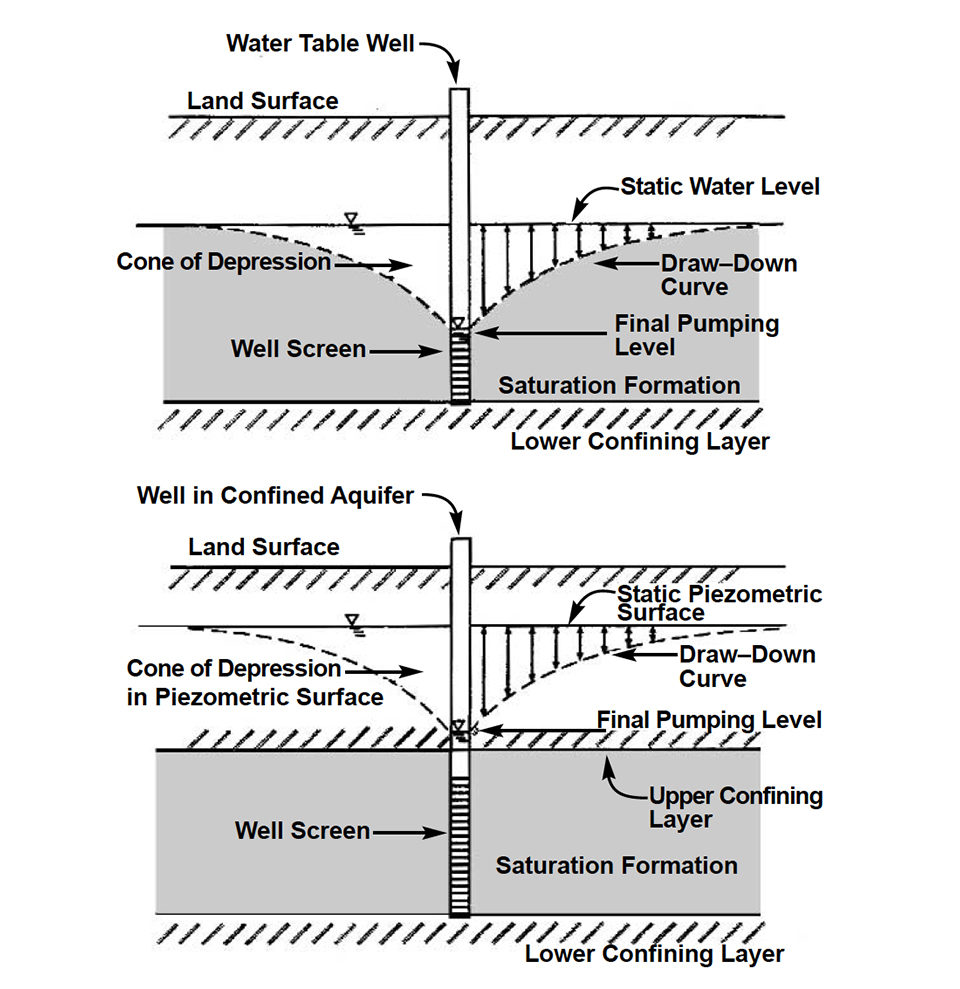
Draw-down curves are steeper in geological materials of low permeability than those of higher permeability. The entire cone-shaped volume from which the well has removed water is the cone of depression. The maximum lateral extent of water table depression around the well is the radius of influence.
Wells in confined aquifers function much like those in unconfined aquifers, but the pumping level is above the upper confining stratum, and the saturated zone around the well is not dewatered. The level of water in the wells without pumping marks the piezometric surface (Fig. 2). During pumping, the piezometric surface around the wells is drawn down in the same manner as the water table surface around wells in an unconfined aquifer. Once the pumping level falls below the confining stratum, wells in a confined aquifer function exactly like water table wells.
Groundwater quality
The quality of groundwater can vary greatly from aquifer to aquifer and even within the same aquifer depending upon the composition of the geological matrix. Groundwater can have unusual chemical qualities when compared to surface water. Some well waters are unsuitable for use in aquaculture, and others must be treated before use.
Some examples of water quality problems in well water are low pH and high concentrations of carbon dioxide, iron, manganese, and sulfide. Groundwater also can be deficient in such ions as potassium, calcium, or magnesium. In cold regions, groundwaters can be supersaturated with gases that must be removed before use in hatcheries to avoid gas bubble disease. However, other groundwaters are completely devoid of dissolved oxygen and require aeration for hatchery use.
Where there is no knowledge of aquifer characteristics, a test well should be made to determine the quality of water and probable well yield before investing in a production well.
Groundwater issues
During droughts or in arid regions where groundwater recharge by rainfall is slow, wells can remove so much water that their discharge decreases or goes dry. When wells are placed too close together, the cone of depression of one well can overlap those of other wells, resulting in a decline in well yield.
In coastal areas, overpumping of a freshwater aquifer can reduce the head of fresh water and allow saline water from the estuary or sea to infiltrate the fresh water aquifer and cause ground water salinization. This phenomenon is one of the adverse impacts that can result from use of fresh water from wells in coastal aquaculture ponds.
The water in aquifers helps bear the weight of the land above. Over-pumping of aquifers can cause land subsidence, as was observed in some areas of Taiwan where much fresh water was once used in shrimp culture.
(Editor’s Note: This article was originally published in the June 2005 print edition of the Global Aquaculture Advocate.)
Now that you've reached the end of the article ...
… please consider supporting GSA’s mission to advance responsible seafood practices through education, advocacy and third-party assurances. The Advocate aims to document the evolution of responsible seafood practices and share the expansive knowledge of our vast network of contributors.
By becoming a Global Seafood Alliance member, you’re ensuring that all of the pre-competitive work we do through member benefits, resources and events can continue. Individual membership costs just $50 a year.
Not a GSA member? Join us.
Author
-

Claude E. Boyd, Ph.D.
Department of Fisheries and Allied Aquacultures
Auburn University
Alabama 36849 USA[117,100,101,46,110,114,117,98,117,97,64,49,101,99,100,121,111,98]
Tagged With
Related Posts
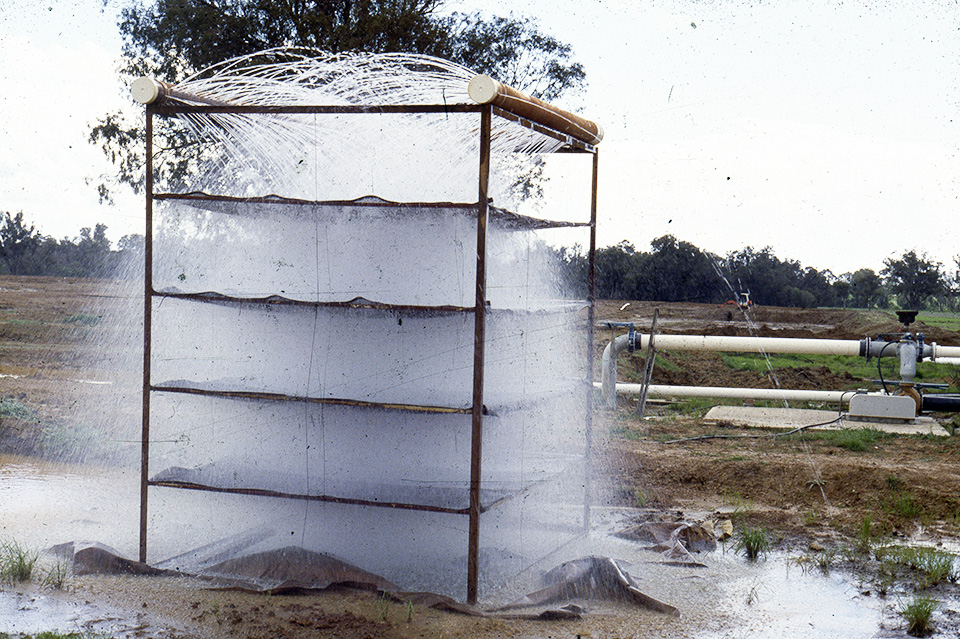
Responsibility
Assessing groundwater quality in aquaculture
Those interested in using groundwater for aquaculture should perform a thorough chemical analysis of the water. Several problems related to groundwater use in hatcheries and holding or transport vessels can be alleviated by degassing or aeration.
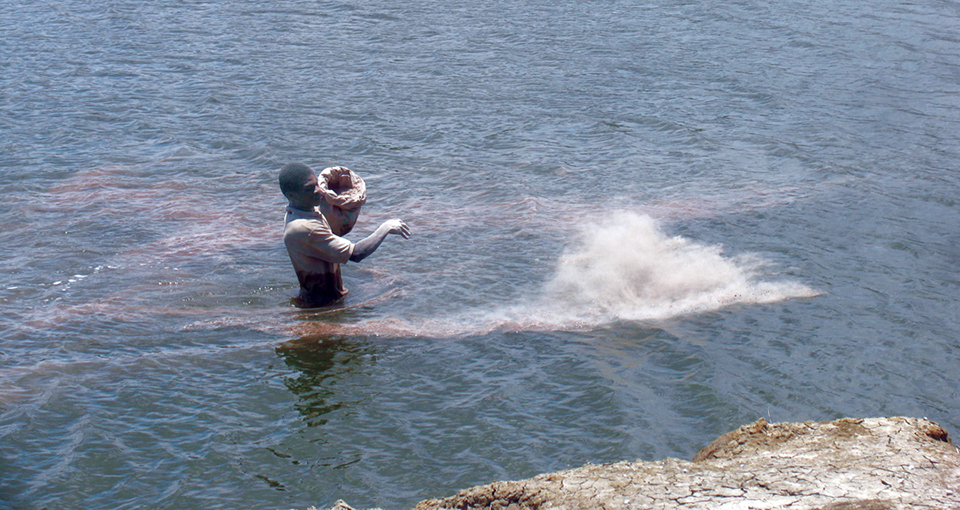
Responsibility
Carbon dioxide: Waste, nutrient
Carbon dioxide is both a nutrient and a waste product in aquaculture. Some pond managers feel that application of organic matter to provide additional carbon dioxide can reduce pH and control blue-green algae.
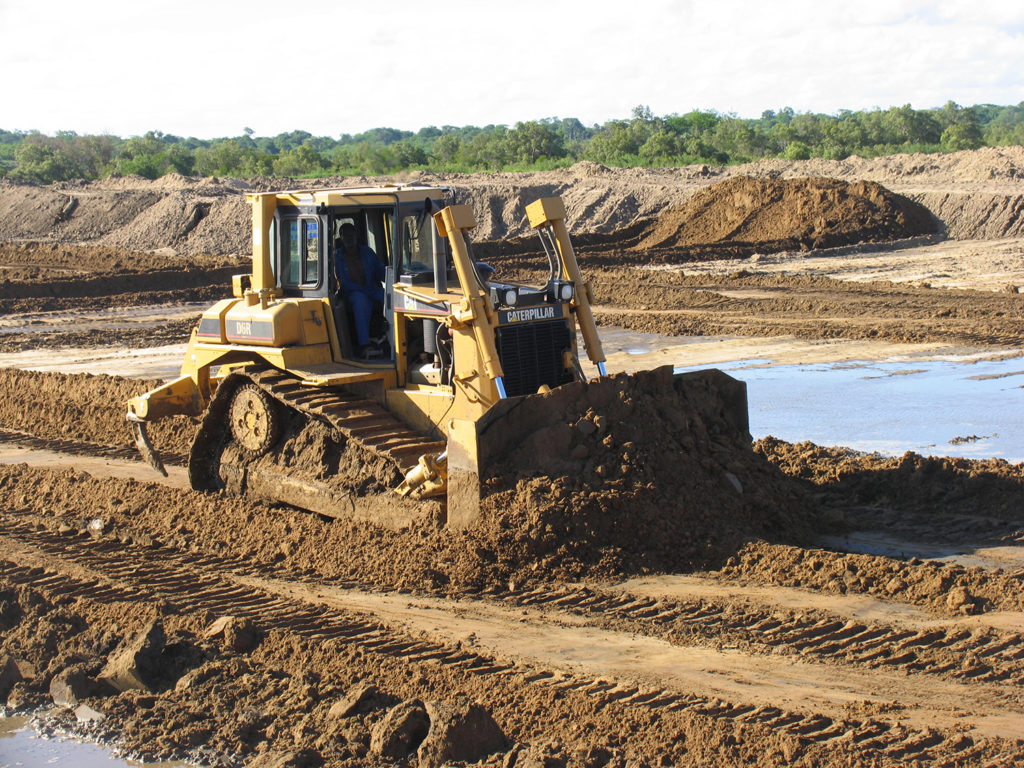
Responsibility
Management of non-hazardous solid waste in shrimp farms
Shrimp farms generate non-hazardous solid waste. Use of a sanitary trench helps comply with environmental legislation, improves biosecurity and minimizes contamination risks.
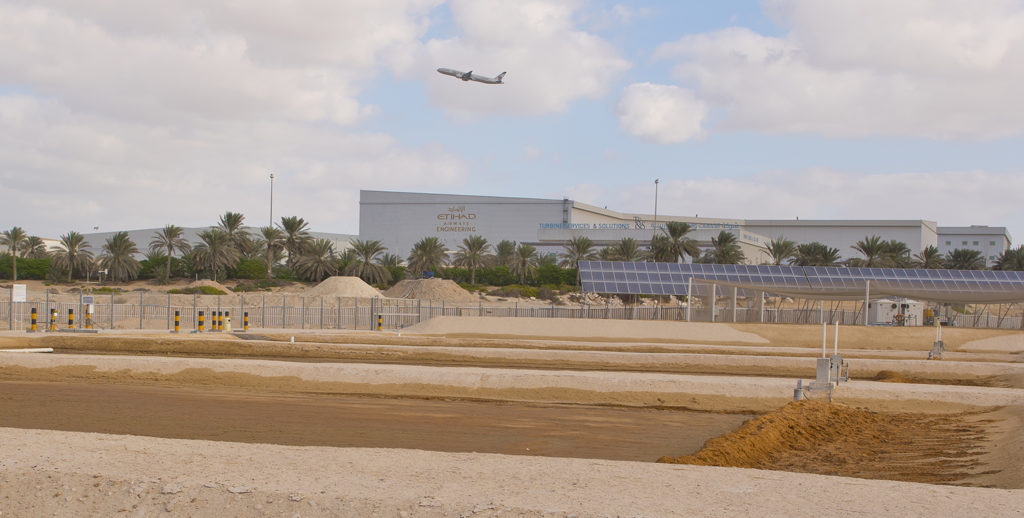
Innovation & Investment
Jet-setting: Turning aquaculture wastewater into aviation fuel
The Seawater Energy and Agriculture System at Khalifa University in Masdar City, UAE, is applying aquaculture concepts to biofuel production for airlines.

